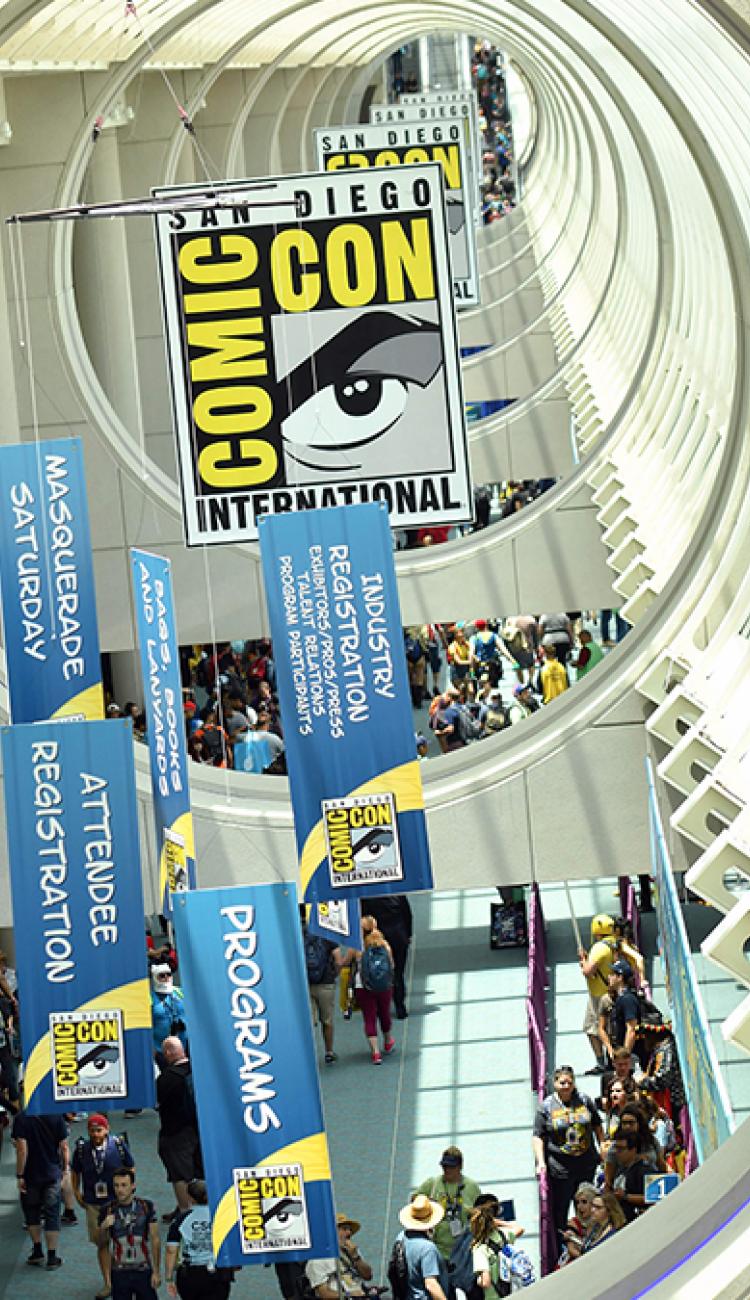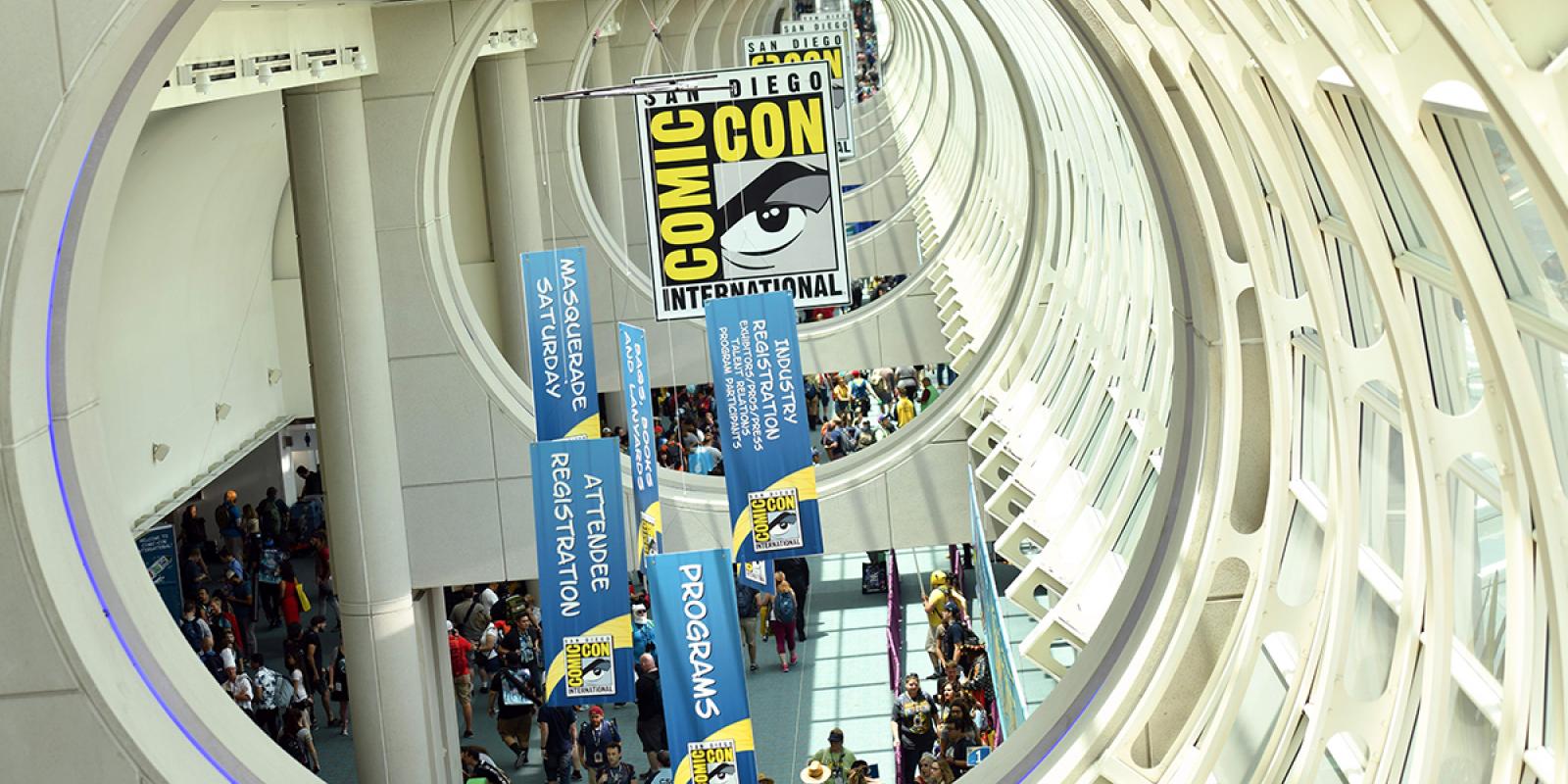Aug 02, 2018
Because no one knows your brand better than its fans.
Last month, nearly 200,000 people made their way to San Diego for this year’s Comic-Con. While the festival is best known as the home of cosplay, comics, and cartoons, it should also be required research for marketers of all industries. It’s simple: the floor of Comic-Con is a case study in the power of marketing. You can see firsthand how fansinteract with one another and with branded activations. You’re able to witness how a passion for a character becomes personified. For example, Jim, a retired Air Force pilot worked on his “Game of Thrones” White Walker costume for more than a year, simply as a way to express his love for the show. These kinds of observations are lessons that should serve as guideposts as we develop and execute our own campaigns.
As marketers, we know that digital has allowed us to measure ROI more easily, target key audiences more clearly, and market more cost-effectively. But, with the ability to reach people for pennies, we’ve become accustomed to the waste that comes when we fail to reach the right audience in the right context with the right messaging. We spend less time in the planning phases because we can optimize mid-stream—adjusting creative, copy and audience segments quickly based on real-time data.
Fans at Comic-Con remind us that brand loyalists are more than just clicks and purchases. They’re in many ways our most critical base. They understand the facets and nuances of particular franchises, but they also have a hyper-aware sense of identity. They flock to the stunts and parties and panels that honor the principles of the fictional worlds—and stray from anything that feels forced or false.
After spending a few days amid the chaos and creativity of Comic-Con, both as a fan and as a marketer, here are four principles that were consistent among the most impactful events and activations.
To make it matter, make it authentic.
"AUDIENCES AGE 13 TO 25 ARE 2X MORE LIKELY"
to pay more for products or services from brands they consider to be “authentic.”
Consumers don’t have the time or desire to interact with brands that aren’t honest or real about what they are. In interview after interview with fans, they all reiterated the same thing—they want to spend their time (which should always be valued at a premium) with a brand that they know and that they feel understands them.
At Viacom, our research indicates that developing trust with audiences has a real impact on a business’s bottom line. In fact, 60% of audiences age 13 to 25 agree that brands should be as honest as people try to be,1 and they are 2X more likely to pay more for products or services from brands they consider to be “authentic.”2
Aspire for great, not gimmicky.
Comic-Con was full of inspired, mind-bending VR and AR experiences, but one of the most talked about activations was a “Deadpool” dance party featuring animatronic backup singers. It didn’t have a ton of “bells and whistles,” but it did stay true to the franchise’s ethos and easily reminded fans of why they love “Deadpool.” The execution was a strong reminder that flashy technology isn’t always necessary for engagement.
It also proved that in a time where technology has created a way to immerse yourself in a fictional reality like never before, sometimes it’s the real-life connections that forge the most unforgettable moments.
“In general, everyone’s going down the immersive storytelling route, trying to create worlds for the fans to step into so they can not only say ‘I saw that’ or ‘I took a photo of it,’ but they can actually be a part of it,” said Shawn Silverman, SVP of Brand Marketing at Comedy Central, which staged several “South Park” activations, including a Cartman-themed escape room and a Member Berries Challenge that invited fans to sit at the Marsh family dinner table for a round of “South Park” trivia. (Answer incorrectly, and you were sprayed with Member Berry puke.)
According to Silverman, events like Comic-Con are a way to reward fans’ devotion. The goal is to create something that enables them to walk away thinking, “that was worth the wait.”
Focus on the fans.
It was clear from the lines around the block that fans were enthusiastic about the pop-up shops and screenings, such as AMC’s Dead Quarters obstacle course that included a zombie slide and Amazon’s “Jack Ryan” installation. But what leads to this type of devotion? It seemed like the most popular activations were especially attuned to both the personality of their brands and their fans. They were fan-forward experiences, not driven by an isolated room full of network executives.
“Comic-con is a great environment for us to get a one-on-one perspective from the fans. It allows us to say, ‘we appreciate you as a fan, what can we do to make the fan experience better for you?’” said Christopher Brion, creative director for South Park Digital Studios. “There’s no better place to do it than at Comic-Con or at an event like there where we can be on the ground interacting.”
Make them feel something.
A flashy creative or witty copy may catch someone’s eye, but it’s only the first step in building a lasting relationship. The real power of marketing is to make your audience feel something, allowing for deeper connections that extend beyond a singular moment in time—what Dipanjan Chatterjee of Forrester calls the “primal pull” of a brandthat has an emotional attachment to a consumer.
"You can interact with your favorite brands and also meet the people that make the stuff that you love, and there’s no substitute for that at the end of the day."
Comic-Con epitomized emotional connection. Audiences traveled from across the country, camped out overnight and stood in lines for hours, simply to get close to the brands they love. The reason? These brands sparked feelings of excitement, hope, passion, and desire. They made fans feel appreciated by creating opportunities to hear and interact with the stars and creators and to be part of the action themselves by participating directly in brand activations.
As Jonathan Roufaeal, a special events manager at Viacom, said, “Comic-Con is a place where you can interact with your favorite brands and also meet the people that make the stuff that you love, and there’s no substitute for that at the end of the day.”
In short, Comic-Con was a simple, yet potent reminder of the power of a passionate audience and proof that the core principles of marketing still ring true.
See more of the highlights from Comic-Con below:
Sources
-
Viacom Culture and Creative Insights, Visual Communication Study 2017, ages 13-25.
-
Viacom Culture and Creative Insights, Brands in Proximity 2018, ages 13-25.
Amy Jaick is the VP of Social and Digital Strategy at Viacom, with 15 years of experience in marketing and communications at The Economist, Goodman Media, and Estimize.

